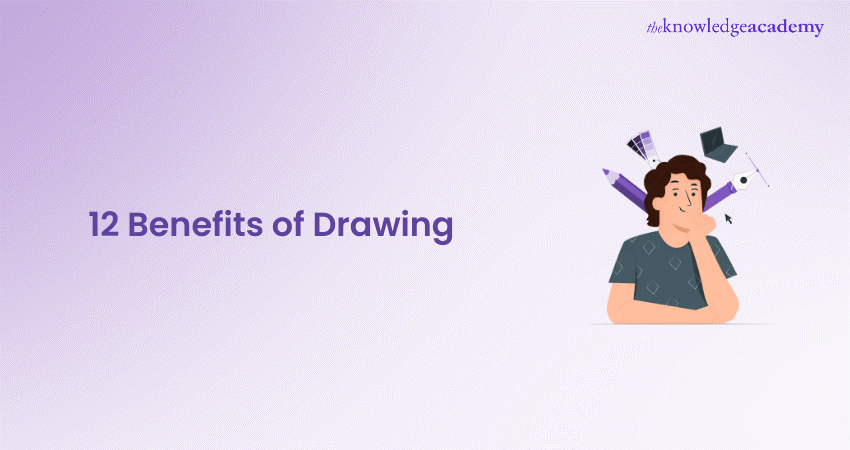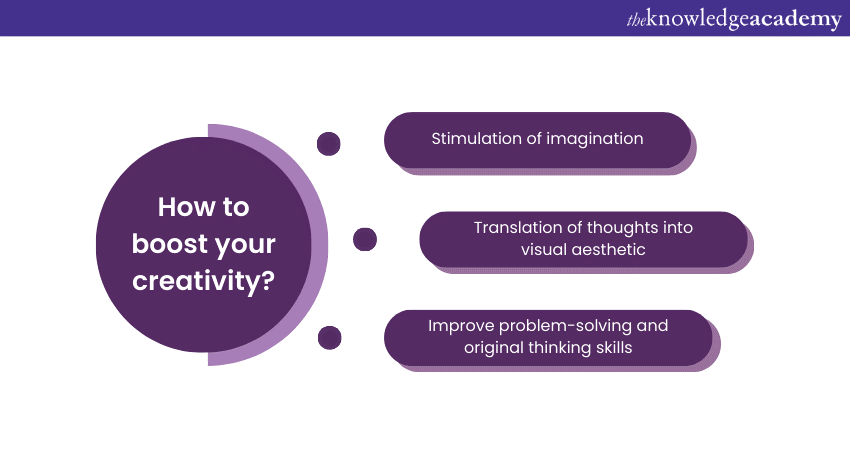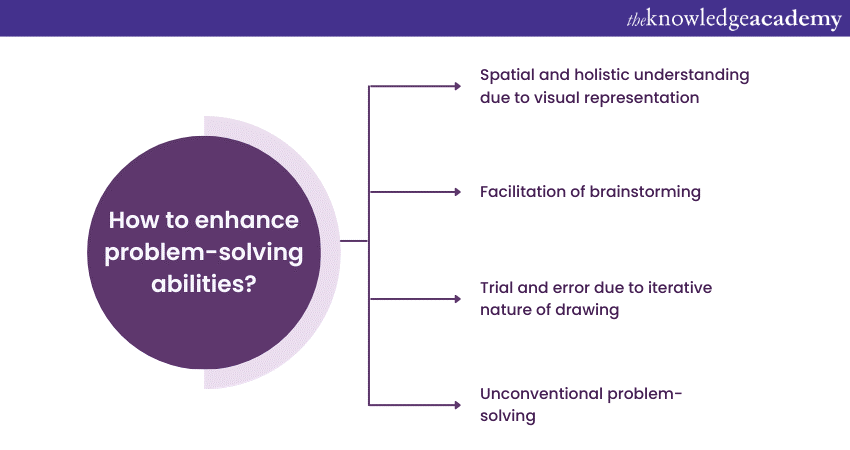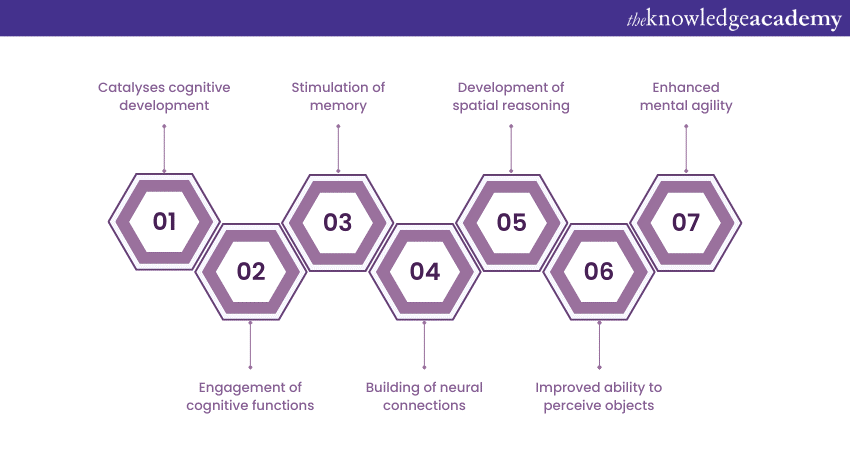We may not have the course you’re looking for. If you enquire or give us a call on 01344203999 and speak to our training experts, we may still be able to help with your training requirements.
We ensure quality, budget-alignment, and timely delivery by our expert instructors.

Embarking on the artistic journey holds the key to unlocking a multitude of advantages for personal growth and cognitive enrichment. This exploration is a testament to the many Benefits of Drawing, a transformative practice that transcends mere artistic expression.
Beyond the strokes of a pencil, Drawing cultivates fine motor skills, enhances problem-solving abilities, and sparks creativity. This blog will explore the transformative Benefits of Drawing beyond pencil strokes, highlighting its positive impact on the mind, body, and soul.
Table of Contents
1) What is Drawing?
2) Incredible benefits of Drawing
a) Enhance your communication skills
b) Boost your creativity
c) Optimise your memory function
d) Enhance your emotional intelligence
e) Enhances problem-solving abilities
f) Enhances focus
g) Elevates fine motor skills
h) Boosts coordination
I) Fosters cognitive development
j) Enhances planning and analytical skills
k) Boost brain activity
l) Enhance observational skills
4) Conclusion
What is Drawing?
Drawing is a timeless and fundamental form of visual expression, serving as a means to communicate ideas, emotions, and observations. At its core, Drawing involves the creation of images through the use of lines, shapes, and tones on a surface, typically paper.
It is a universal language that transcends cultural and linguistic barriers, allowing individuals to convey their unique perspectives and creativity. The act of Drawing is not limited to skilled artists; rather, it is a skill that anyone can develop with practice and dedication.
Furthermore, it serves as a powerful tool for self-expression, enabling individuals to externalise their thoughts and feelings in a tangible form. From the simplest doodles to intricate masterpieces, Drawing spans a spectrum of complexity, making it accessible to people of all ages and skill levels.
Drawing comes in various forms, including pencil sketches, ink illustrations, charcoal renderings, and digital art, each offering its own set of possibilities and challenges. It is a process of observation, interpretation, and execution, requiring a keen eye, a steady hand, and an understanding of fundamental artistic principles.
Beyond its artistic value, Drawing plays a crucial role in fields such as science, design, and education, where visual representation serves as a powerful tool for communication and problem-solving. In essence, Drawing is more than putting pen to paper; it is a dynamic and versatile means of expressing the beauty, complexity, and diversity of the world around us.

Incredible Benefits of Drawing
Drawing is a transformative practice with multifaceted benefits. It enhances observation skills, fosters creativity, and promotes self-expression. Through consistent practice, Drawing cultivates patience, sharpens focus, and encourages a growth mindset.
Beyond personal development, it serves as a universal language, bridging communication gaps and fostering a deeper connection with the surrounding world. Below are the various benefits of Drawing explained in detail. Have a look:
a) Enhance your communication skills
Drawing is a potent tool for enhancing communication skills. Beyond words, visuals can convey complex ideas with clarity and impact. Through Drawing, individuals can articulate concepts, emotions, and narratives more vividly, fostering effective expression.
Furthermore, this visual language transcends cultural and linguistic barriers, enabling universal understanding. Additionally, as a collaborative medium, Drawing encourages active listening and interpretation, strengthening interpersonal communication.
Moreover, whether in professional settings, educational environments, or personal interactions, harnessing the power of Drawing enhances one's ability to communicate with nuance, depth, and a visual eloquence that words alone may sometimes struggle to achieve.
b) Boost your creativity

Drawing is a catalyst for unlocking and boosting creativity. Engaging in the act of Drawing stimulates the imagination, encouraging individuals to explore new perspectives and envision unique possibilities.
It also serves as a platform for experimentation, allowing the mind to roam freely and generate innovative ideas. The process of translating thoughts into visual form promotes cognitive flexibility, breaking down mental barriers.
Regular Drawing practice fosters a creative mindset that extends beyond the paper, influencing problem-solving skills and original thinking. Whether through doodles or intricate illustrations, Drawing nurtures creativity, transforming it from a latent potential into an active, expressive force in daily life.
c) Optimise your memory function
Drawing serves as a powerful tool for optimising memory function. The act of visually representing information reinforces neural connections, aiding in information retention. When we draw, we engage both hemispheres of the brain, enhancing cognitive processing.
Moreover, visualising concepts through Drawings provides a mnemonic device, making it easier to recall details and relationships. This multisensory approach taps into spatial and associative memory, deepening our understanding of the subject matter.
From mind maps to diagrams, Drawing becomes a mnemonic aid, optimising memory recall and fostering a more profound grasp of ideas. It transforms the learning experience into a dynamic, visually anchored process that strengthens cognitive functions.
d) Enhance your emotional intelligence
Drawing serves as a unique pathway to enhance emotional intelligence. Through artistic expression, individuals can externalise and explore complex emotions, fostering self-awareness. Exploring the creative process cultivates empathy, as artists must connect with their subject matter on a profound level.
Analysing and interpreting visual cues in Drawings, whether personal or others', sharpens emotional perception. The act of creating visual narratives provides a therapeutic outlet, aiding in emotional regulation.
Overall, Drawing functions as a visual language for emotions, enabling individuals to understand, express, and navigate their own feelings, as well as empathise with the emotional experiences of others.
Grow out of your past conditioning by signing up for our Emotional Intelligence Course now!
e) Enhances problem-solving abilities

Drawing is a potent catalyst for enhancing problem-solving abilities. The visual representation of ideas on paper encourages a spatial and holistic understanding of challenges. It facilitates brainstorming, allowing individuals to explore multiple solutions simultaneously.
The iterative nature of Drawing promotes trial and error, honing critical thinking skills. Sketching diagrams and flowcharts clarifies complex concepts, aiding in systematic problem analysis.
Moreover, Drawing nurtures creativity, unlocking unconventional approaches to problem-solving. Whether in design, engineering, or daily decision-making, the visual thinking cultivated through Drawing becomes a dynamic tool, empowering individuals to approach problems with innovative perspectives and efficient solutions.
Troubleshoot issues and solve them by signing up for our Problem-Solving Training now!
f) Enhances focus
Engaging in Drawing serves as a powerful method to enhance focus and concentration. The meditative nature of the creative process demands present-moment attention, redirecting the mind from distractions.
The act of carefully observing details, refining lines, and shaping forms cultivates a state of flow, promoting sustained concentration. Through this immersive experience, Drawing becomes a form of mindfulness, sharpening cognitive focus and reducing mental clutter.
Whether sketching simple shapes or intricate scenes, the rhythmic motion of Drawing channels mental energy, fostering a heightened sense of concentration that extends beyond the artistic endeavour into various aspects of daily life.
g) Elevates fine motor skills
Drawing is a dynamic exercise that significantly elevates fine motor skills. The precise control required to manipulate Drawing tools enhances hand-eye coordination and dexterity. From the nuanced strokes of a pencil to the intricate details of shading, these activities refine and strengthen the small muscles in the hands and fingers.
This continuous refinement contributes to improved motor control, aiding in tasks that demand precision. Whether sketching, hatching, or blending, the diverse movements involved in Drawing create a comprehensive workout for fine motor skills, making it an enjoyable and effective way to enhance manual dexterity and control.
h) Boosts coordination
Drawing serves as a potent tool for boosting coordination. The intricate dance between vision and hand movements required during artistic expression hones both gross and fine motor skills. Precision in stroke placement, varying pressure, and fluidity in transitioning between different elements demand acute hand-eye coordination.
As artists translate mental images onto paper, they engage in a dynamic process that enhances spatial awareness and the seamless integration of visual information with physical action. This deliberate coordination not only refines artistic abilities but also extends its benefits to daily activities, fostering a more synchronised and agile relationship between perception and motor response.
I) Fosters cognitive development

Drawing is a catalyst for robust cognitive development. The process of translating thoughts into visual representations engages various cognitive functions. It stimulates memory as individuals recall and reproduce images, fostering neural connections.
Problem-solving skills are honed as artists navigate composition and proportions. Additionally, the constant decision-making involved in choosing colours, shapes, and techniques enhances critical thinking.
Drawing promotes spatial reasoning, refining the ability to perceive and manipulate objects mentally. Whether creating simple sketches or intricate illustrations, the cognitive demands of artistic expression make Drawing a holistic exercise that nurtures mental agility, contributing significantly to overall cognitive development.
j) Enhances planning and analytical skills
Drawing is a powerful tool that enhances planning and analytical skills. The process of envisioning an image and executing it on paper requires meticulous planning, encouraging individuals to break down complex ideas into manageable components.
Artists must analyse spatial relationships, proportions, and composition, fostering a structured approach. Whether sketching architectural designs, mapping out concepts, or creating intricate illustrations, Drawing demands foresight and strategic thinking.
More importantly, this practice refines analytical skills as artists assess visual elements and plan the execution of their ideas. Through this creative process, Drawing becomes a dynamic exercise that sharpens planning and analytical abilities across various domains.
Devise creative solutions by signing up for our Creative and Analytical Thinking Training now!
k) Boost brain activity
Engaging in Drawing provides a significant boost to brain activity. The intricate coordination between vision, creativity, and motor skills activates various regions of the brain simultaneously.
The act of translating mental images into tangible Drawings stimulates neural connections, promoting cognitive function. This dynamic process enhances focus, memory, and problem-solving skills, contributing to overall mental agility.
As individuals immerse themselves in the creative flow of Drawing, brain activity intensifies, fostering a heightened state of awareness. Whether sketching simple shapes or complex scenes, the cognitive demands of artistic expression make Drawing a powerful stimulant for brain function, encouraging both creativity and cognitive prowess.
l) Enhance observational skills
Drawing serves as a potent catalyst for enhancing observational skills. The practice of closely examining subjects, capturing nuances of form, light, and shadow, sharpens one's ability to perceive details. Artists learn to scrutinise the world with heightened attention, translating visual information into precise strokes.
Through this deliberate observation, individuals develop a keen eye for proportions, textures, and spatial relationships. Whether sketching from life or studying reference materials, Drawing hones the power of keen observation, fostering a deeper connection with the environment. This enhanced perceptual acuity not only benefits artistic endeavours but also extends its impact on daily life, enriching the way individuals interact with their surroundings.
Conclusion
In conclusion, the benefits of Drawing are a multifaceted gift to personal and cognitive development. From enhancing fine motor skills to fostering creativity and sharpening observational prowess, Drawing is an enriching journey. Embrace the creative process, unlock its potential, and witness the profound impact on your skills, mind, and life.
Explore creative thinking with material and styles by signing up for our Drawing Masterclass now!
Frequently Asked Questions
What are the Other Resources and Offers Provided by The Knowledge Academy?

The Knowledge Academy takes global learning to new heights, offering over 3,000 online courses across 490+ locations in 190+ countries. This expansive reach ensures accessibility and convenience for learners worldwide.
Alongside our diverse Online Course Catalogue, encompassing 19 major categories, we go the extra mile by providing a plethora of free educational Online Resources like News updates, Blogs, videos, webinars, and interview questions. Tailoring learning experiences further, professionals can maximise value with customisable Course Bundles of TKA.
Upcoming Office Applications Resources Batches & Dates
Date
 Design Patterns Training
Design Patterns Training
Fri 6th Jun 2025
Fri 8th Aug 2025
Fri 3rd Oct 2025
Fri 5th Dec 2025






 Top Rated Course
Top Rated Course


 If you wish to make any changes to your course, please
If you wish to make any changes to your course, please


